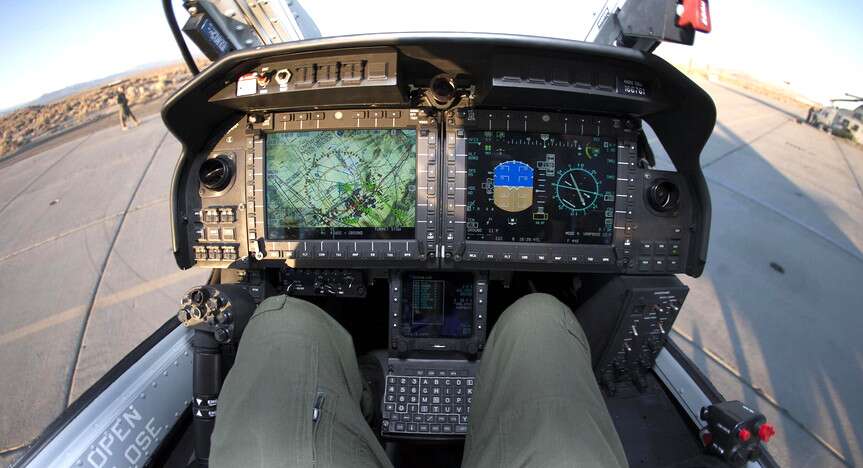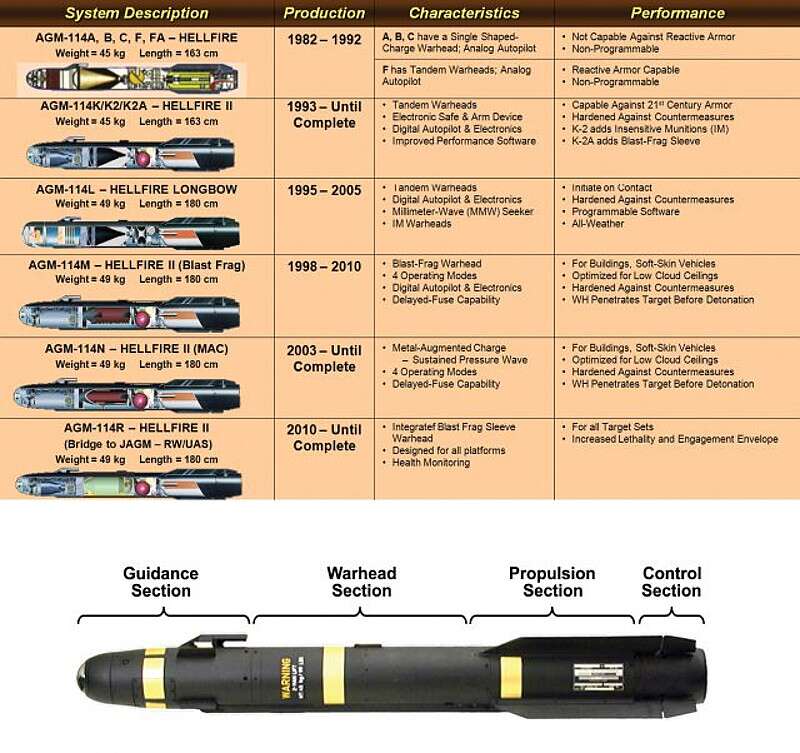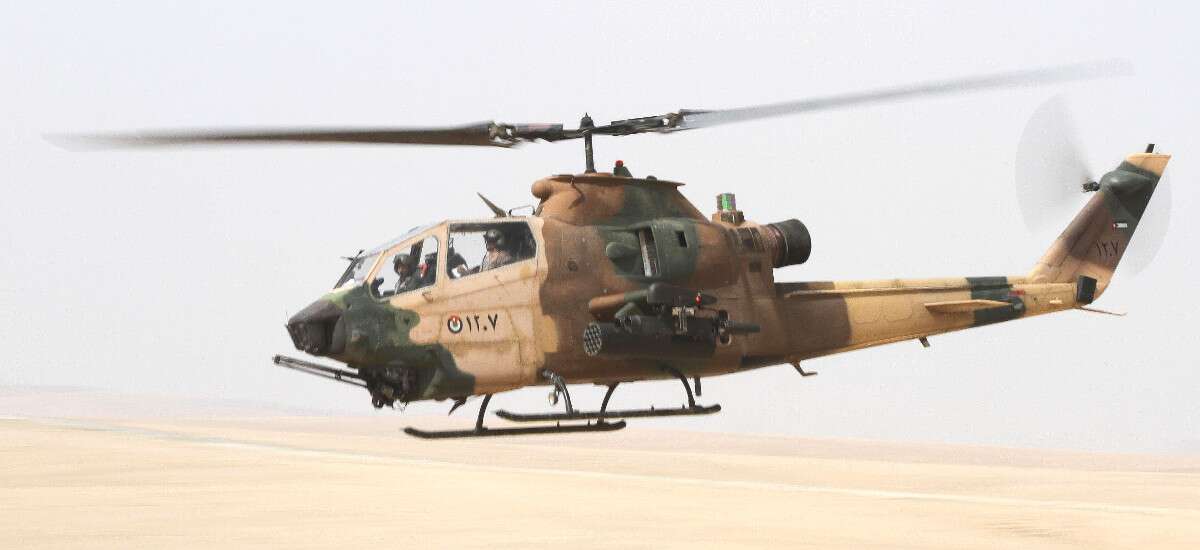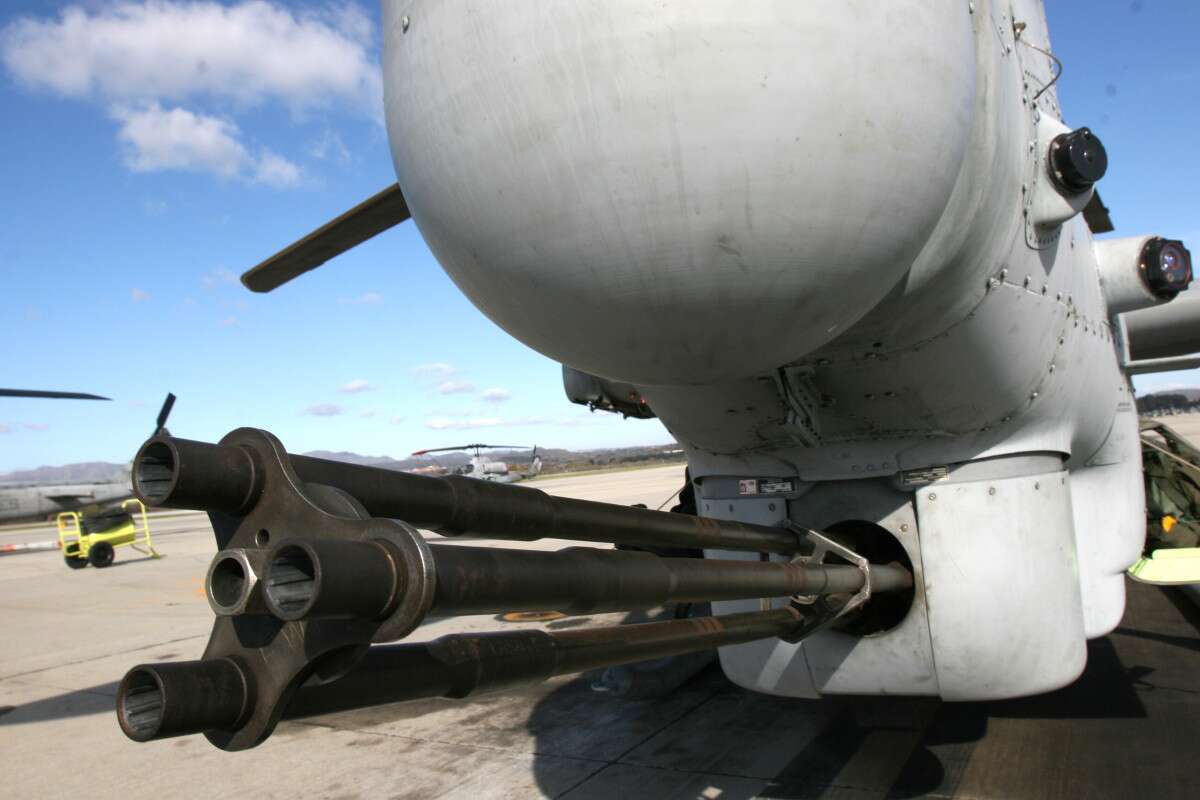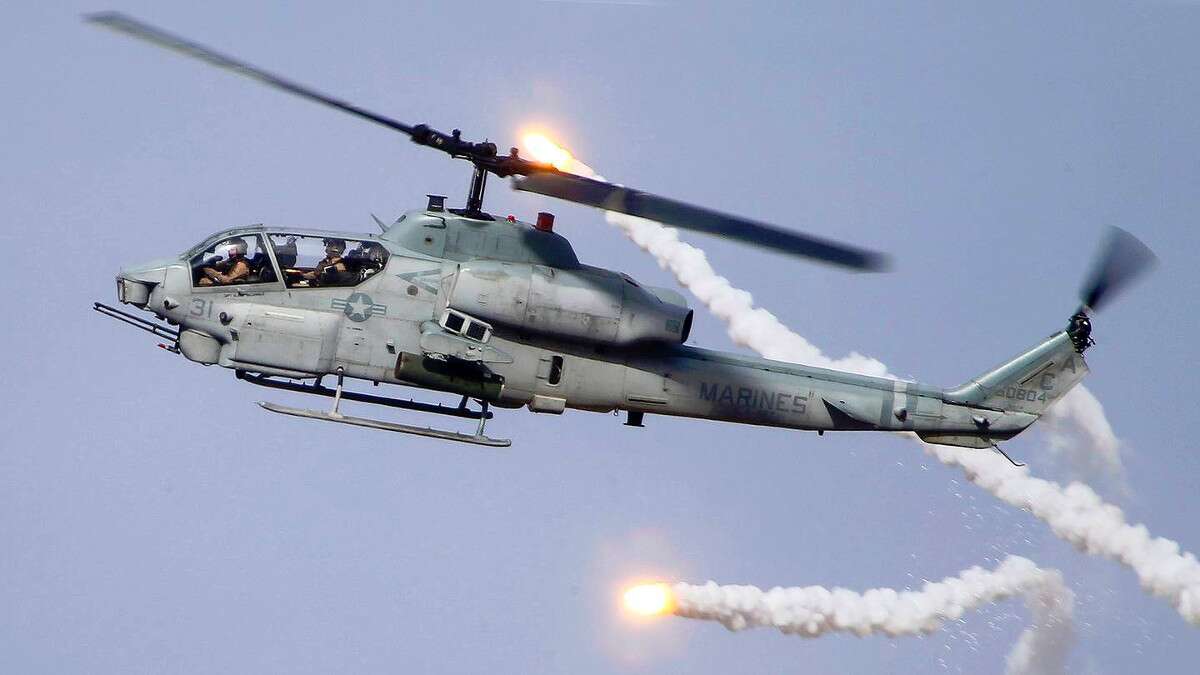Jordan is in the process of upgrading some of its AH-1F Cobra gunship helicopters to a new standard that incorporates many features similar, or outright identical, to those on the latest AH-1Z model. The update package could potentially serve as a model for other countries looking to upgrade their existing AH-1s or for military forces considering buying Cobras for the first time on the growing secondary market.
The Jordanian Air Force displayed one of the modified helicopters during the country’s biennial Special Operations Forces Exhibition, or SOFEX, which took place at Marka Airport in the capital Amman in May 2018. According to a report from Aviation International News, Jordan has taken delivery of two of the updated gunships from American contractor Science & Engineering Services (SES) for training purposes, but they will have to go back to the United States for additional live-fire testing.
Jordan is looking to upgrade 12 AH-1Fs in total, but it has a number of additional E and F models in service, including 16 it acquired from Israel in 2015, that it could put through the update program if it chose to do so. We have reached out SES for additional information, but at the time of writing we had not yet heard back about our queries.
However many helicopters the Jordanian Air Force eventually decides to upgrade, they will be significantly more capable than they had been in their previous configurations. The new versions will feature an Integrated Avionics System from Northrop Grumman that is the same as the one found on the latest new production twin-engine AH-1Z Zulu Cobras, also known as Vipers, from Bell.
This suite has an LN-251 inertial navigation system using a fiber-optic gyroscope. It also replaces a number of analog systems in the front and rear cockpits with large flat-panel multi-function displays by L3. New AN/ARC-210 radios from Rockwell Collins round out the major cockpit updates.
This comprehensive upgrade significantly reduces strain on operators who no longer have to keep track of the readouts from a mix of analog gauges, optical scopes, and antiquated heads-up displays. The U.S. Army is putting its older UH-60 Black Hawks through a similar and relatively low-cost update program for many of the same reasons.
The new Jordanian helicopters also have an improved OrbitalATK AN/AAR-47 missile approach warning system coupled with an Extant Aerospace AN/ALE-47 dispenser able to fire decoy flares and chaff. It’s not clear if there are any additional updates to the gunship’s defensive sensor suite and countermeasures systems planned for the future.
One of the cockpits of an AH-1Z showing the two main multi-function displays.
The most visible change is SES’ replacement of the original Telescopic Sight Unit, or TSU, with a new L3 Wescam MX-15D sensor turret, which is similar in both form and function to the Lockheed Martin AN/AAQ-30A Target Sight System, or TSS, on the AH-1Z. The TSU was specifically for guiding the TOW anti-tank missile, an optically-tracked weapon that required the gunner to keep the sight on the target until the weapon hit its mark.
The new system contains both electro-optical and infrared cameras, as well as a laser designator. Not only does this combination of systems it make it more flexible than the older TSU, but it also greatly expands the crew’s ability to use it for reconnaissance and surveillance missions, as well as target acquisition.
https://youtube.com/watch?v=XE4y3PArOmw%3Frel%3D0
The new Jordanian AH-1s combine the new sensor system with Hellfire missiles and Advanced Precision Kill Weapon System II laser-guided rockets, or APKWS II,. This pairing will give the gunships good flexibility against a variety of different targets.
The ever-popular Hellfires already come in a number of different types. According to Jane’s 360, Jordan will primarily use the AGM-114R variant, which combines an anti-tank warhead with a fragmentation sleeve for use against both armored vehicles and soft targets. Other options include the tandem-warhead AGM-114K, which has a better chance to defeat countermeasures such as explosive reactive armor, and the thermobaric AGM-114N, ideal for engaging unarmored vehicles and enemy personnel both out in the open and inside buildings.
A breakdown of common Hellfire variants.
The smaller APKWS IIs mate a laser-guidance system to existing 70mm rockets and warheads, resulting in low-cost precision-guided munitions that can engage a variety of different targets. High explosive warheads are among the most common, but the U.S. military has begun building versions using the M282 warhead that has the ability to break through some armor and reinforced structures.
The rockets also have a smaller warhead than the Hellfires, which has allowed other military forces, including U.S. special operations forces, to use them to engage relatively small targets, such as individual enemy fighters in doorways and windows. And Since the AH-1s will be able to carry pods with seven or 19 of these weapons on one pylon, instead of just four Hellfires, it will drastically increase the total number of targets they can engage before needing to rearm, as well. And there’s always the gunship’s 20mm M197 three-barrel cannon under the nose, too.
https://youtube.com/watch?v=aPXh0SpQU6w%3Frel%3D0
We don’t know the exact price Jordan is paying to upgrade each AH-1F, but it is very likely far cheaper than buying an AH-1Z straight off the production line. A new build Zulu Cobra costs more than $30 million, according to the U.S. military’s latest budget request for the 2019 fiscal year.
The unit cost of an older twin-engine AH-1W when it rolled out of Bell Helicopter’s plant in 1986 was only around $22 million when adjusted for inflation to 2018 dollars. Single engine models such as the AH-1F were cheaper and the value of older Cobra types aircraft available on the secondary market is almost certain to have depreciated markedly.
A Jordanian Air Force AH-1F in its standard configuration.
It’s also possible that these upgrades could lead to additional improvements as time goes on. The sensor turret mount especially is readily suitable to other L3 Wescam offerings that could either offer more or less capability as desired. It’s not hard to see other new features, such as a directional infrared countermeasures system, or DIRCM, to defeat infrared-guided anti-aircraft missiles or a new gun system, becoming available for the AH-1 series later on.
Despite there being no takers so far, various companies have pitched up-gunning programs for decades already, including swapping out the M197 for the single-barrel 30mm M230 chain-gun found on the AH-64 Apache. The lightweight M230LF version that is now available would be even better suited to any AH-1 platform.
The M197 on an AH-1Z.
As such, the upgrade package SES has put together for Jordanian Air Force, or a version thereof, could easily be a more cost-effective starting place for any country still operating older AH-1s or that is looking to do so. Jordan itself has donated AH-1Fs from its own stocks to other countries, such as Kenya and the Philippines.
More significantly, as the U.S. Marine Corps retires its AH-1Ws for good in favor of the AH-1Z, the U.S. military has begun actively looking for ways to modernize them for sale to foreign allies and partners. In December 2017, the Navy said it was interested in hiring a contractor specifically to install a new, commercially available off-the-shelf avionics update to help sweeten the deal, which sounds very much like what SES offered to Jordan.
As of May 24, 2018, there were already more than 30 “Whiskey Cobras” sitting at the Bone Yard at Davis Monthan Air Force Base in Arizona, according to a monthly U.S. Air Force inventory report. In March 2018, Brazil, which recently bought the helicopter carrier ex-HMS Ocean from the United Kingdom, reportedly inquired about buying some of these gunships.
The United States has already had significant success selling off retired OH-58D Kiowa Warrior armed scout helicopters, particularly to allies in Europe and Africa. Combining AH-1Ws, or other second-hand Cobra types, with the SES upgrade package, could be an even more attractive option for small, cost-conscious military forces looking to bolster their capabilities.
A US Marine Corps AH-1W “Whiskey Cobra.”
And countries that had expressed an interest in buying American gunship helicopters in the past, but may have been rebuked over human rights concerns and other issues, such as Nigeria, have found President Donald Trump administration much more willing to approve arms sales in general. Trump has even pushed for American diplomats to more actively promote American-made weapons.
There’s a distinct possibility that upgraded AH-1s similar to Jordan’s new “AH-1Z Lite” gunships will end up in direct competition with the actual, production AH-1Zs. Bell has been steadily growing the Zulu Cobra customer base, but a lower cost alternative with many similar capabilities could definitely draw away potential buyers. If the cost is sufficiently low, the SES updated Cobras might also present some competition for other American-made and foreign light attack helicopters, as well.
It will definitely be interesting to keep an eye out for which countries decide to take the upgrade route and what Cobras they use as a starting place.
Contact the author: [email protected]
Source: Read Full Article

